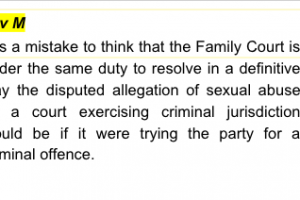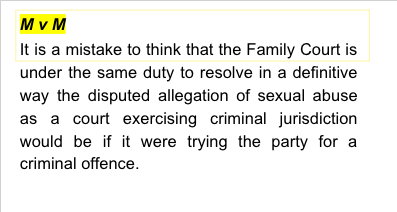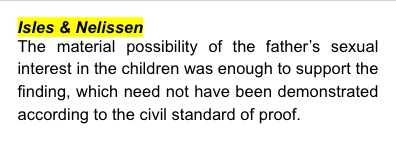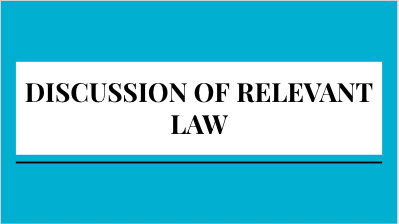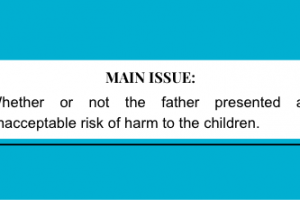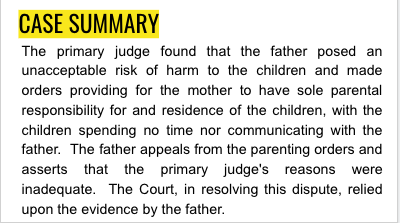- · 4849 friends
Father Appeals Parenting Orders

Eastley & Eastley [2022] FedCFamC1A 101 (8 July 2022)

The primary judge found that the father posed an unacceptable risk of harm to the children and made orders providing for the mother to have sole parental responsibility for and residence of the children, with the children spending no time nor communicating with the father. The father appeals from the parenting orders and asserts that the primary judge's reasons were inadequate. The Court, in resolving this dispute, relied upon the evidence by the father.

Facts:
The parties commenced cohabitation in 2011, married in 2013, and finally separated in 2020. The two children were born in 2017 and 2019. They were respectively aged four and two years at the time the trial concluded and the appealed orders were later pronounced.
At or about the time of separation, the mother formed the view that the father had sexually abused the elder child and so withheld both children from him. The father commenced proceedings seeking parenting orders under Pt VII of the Family Law Act 1975 (Cth) a month later in August 2020.
In September 2020, the proceedings were transferred to the Family Court of Australia from the Federal Circuit Court of Australia (as the courts were then known). In December 2020, the primary judge made interim orders providing for the children to live with the mother and for only the younger child to spend supervised time with the father.
However, those orders were only implemented for about six weeks. The mother ceased compliance when informed by the supervisor that the father had experienced penile erection when with the younger child, which the father denied.
The father made no attempt to enforce the orders after January 2021. As a consequence, the younger child spent no time with the father after January 2021, though the elder child spent no time with him after the marital separation in July 2020, other than when they were interviewed together by a single expert psychologist in November 2020. The primary judge made orders for the mother to have sole parental responsibility for the children and for them to live with her. The orders directed that the children not spend any time nor communicate with the father and restrained him from approaching or contacting the children until they attain their majority.

Issue:
Whether or not the father presented an unacceptable risk of harm to the children.

Applicable law:



Analysis:
The parties’ evidence revealed a multitude of factual discrepancies, many of which were specifically addressed by the primary judge in the reasons for judgment, some without any positive or negative finding being made. Importantly though, the primary judge was not required by law to definitively resolve even the pivotal factual disputes when assessing the risk of harm within the wider context of the discretionary determination of the particular orders which would best promote the children’s interests.
The primary judge did as the law required. His Honour made positive factual findings in respect of some material factual disputes when able to do so but properly focussed upon the task of risk assessment.
The possibility of the children’s sexual abuse by the father was plainly evident from the reasons for judgment. The primary judge did not need to “evaluate” or rate the possibility by any numerical standard, but rather only determine whether or not the risk was “unacceptable”, which his Honour duly did.
The father admitted to making comments and engaging in conduct, described as sexualised, in the children’s presence. There is also a finding that the father did experience an erection when spending time with the younger child under professional supervision, even though denied by him.
Conclusion:
The appeal is dismissed. The appellant shall pay the respondent’s costs of and incidental to the appeal fixed in the sum of $41,555.


